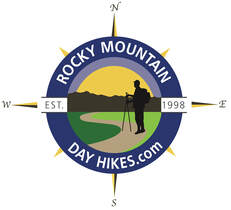|
Notes from the
Trail |
|
Early Estes Park - A Search for Opportunity
By Sybil Barnes This is a forward I wrote for a section of a 2007 publication featuring the photographs of James Frank. The library still has a couple copies or you might be able to find it on a used book site. “Magic in the Mountains: Estes Park, Colorado.” JJ has had a varied career in Estes as a musician, extraordinary photographer, author, purveyor of First Light postcards, and the original owner with his wife Tamara of the Aspen and Evergreen Gallery. Another major contributor to this book was Paul Firnhaber and several other local “celebrities” wrote introductory forwards to various sections. I’ve made a few minor changes to to the original text: History is how we keep track of our memories. Because few of us can interpret the cry of the hawk or the chitter of a chipmunk or the song of a waterfall, and fewer can even hear the voices of rock or tree, our history is told through human vocabulary. We use our personal experience and recollections of experiences handed down through generations of the people who live in our town to place an order and possible meaning on what may be random events. History is the story of a search for opportunity. The earliest opportunists who came to this area were the people we now identify as PaleoIndians. These nomadic people enjoyed the abundance of wild game and respite from the heat of summer on the high plains. Even then it was a transitory experience. Not many were willing to spend the winters in a place they called “the land of many snows. As civilization and settlers moved westward looking for gold or other means of economic survival, the opportunists tried to figure ways to sell the beauty of the area by offering places to stay for renewal and recreation away from the city. Some of those early settlers were able to stay year-round and leave their names and descendants to guide the town into new ventures and new centuries. Others moved on, leaving only whispers of memory. Estes Park has been discovered and rediscovered, touted as a tourist mecca and vilified as a tourist trap. Estes Park has seen boom and bust, the heartbreak of lives lost through floods and mountaineering accidents, the dreams of scores of entrepreneurs and retirees. Estes Park has been summer home or vacation retreat to millionaires, presidential candidates, company executives, school teachers, artists, rock stars,and hippies, as well as hundreds of thousands of “just plain folks.” Through it all, local residents have drawn solace from the beauty of the surrounding mountains and a pioneering spirit which recognizes that material goods are not the only reward for lives spent. History is a daily experience. And it is a reciprocal one. Your history becomes ours and ours becomes yours.
0 Comments
Leave a Reply. |
"The wild requires that we learn the terrain, nod to all the plants and animals and birds, ford the streams and cross the ridges, and tell a good story when we get back home." ~ Gary Snyder
Categories
All
“Hiking -I don’t like either the word or the thing. People ought to saunter in the mountains - not hike! Do you know the origin of the word ‘saunter?’ It’s a beautiful word. Away back in the Middle Ages people used to go on pilgrimages to the Holy Land, and when people in the villages through which they passed asked where they were going, they would reply, A la sainte terre,’ ‘To the Holy Land.’ And so they became known as sainte-terre-ers or saunterers. Now these mountains are our Holy Land, and we ought to saunter through them reverently, not ‘hike’ through them.” ~ John Muir |
© Copyright 2025 Barefoot Publications, All Rights Reserved


